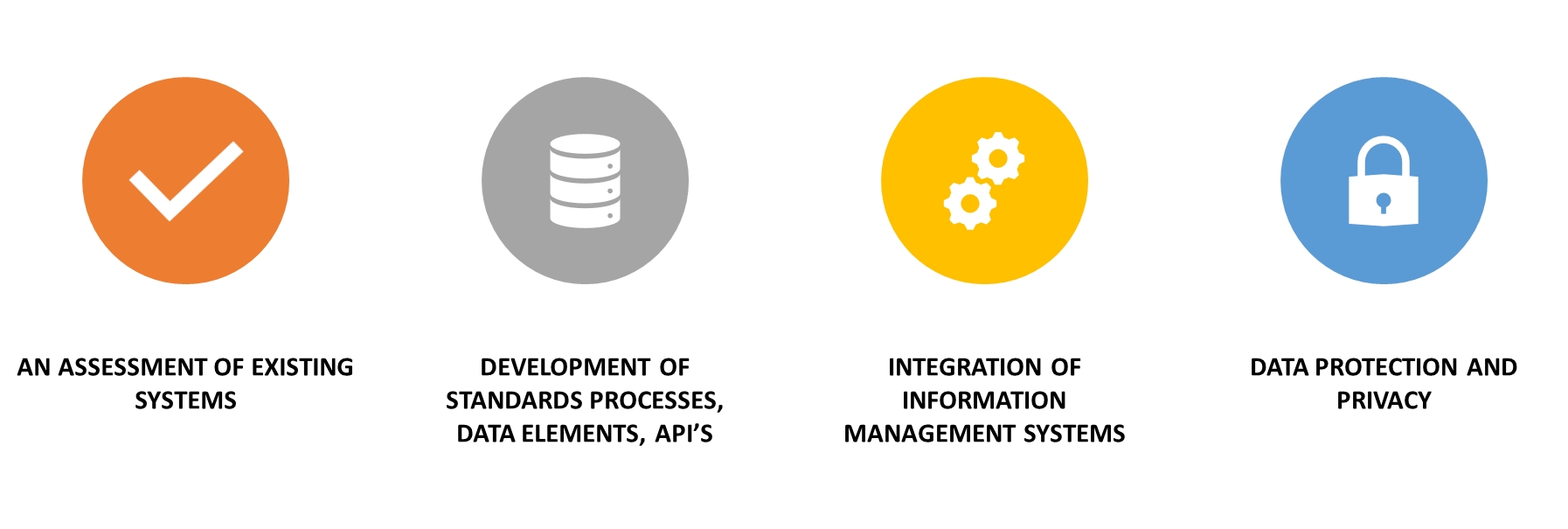Introduction
The standards focus on the interoperability requirements between farmer registries (FRs) and social protection (SP) systems. They provide examples of the types of information that SP systems may require from an FR, and vice versa, to promote more inclusive social protection and optimise support for farmers. The information contained in an FR varies across countries, and the standards are designed based on observations from diverse contexts to facilitate practical interoperability with SP systems. The standards also reference recommendations from the World Programme for the Census of Agriculture 2020 and the Guidelines on International Classifications for Agricultural Statistics. However, the standards do not address how to develop an FR or establish interoperability with other systems, such as land registries and early warning systems.
FRs are typically developed and managed by government entities in the agriculture sector, such as ministries of agriculture. These registries compile data on farm holdings and their owners, supporting informed decision making and policy development. They provide administrative information, rather than statistical data (like census or sample-based information), about 'who does what and where' in the agricultural sector.
Its important to note that FRs are distinct from social registries. While a social registry includes a comprehensive list of all individuals and households registered (and, thus, potentially eligible for benefits), an FR focuses solely on individuals registered as farmers, along with details about their farming units and activities.
FRs are a vital tool intended to enhance the efficiency, transparency, and effectiveness of social protection and agricultural support programmes. They functions as both an analytical and operational resource within SP systems. The key objectives of an FR include:
Targeted assistance: FRs allow for the precise identification of farmers in need, enabling targeted support such as subsidies, technical assistance, and access to resources.
Personalised support plans: By maintaining comprehensive data on farmers and their farming units, FRs empower agricultural advisors and policymakers to customise support services to individual needs, optimising resources for improved outcomes.
Informed policy making: FRs supply essential data that helps in understanding the distribution and characteristics of the farming population, aiding policymakers in resource allocation and the development of programmes that address specific agricultural challenges.
Benchmarking and evaluation: The data from FRs facilitates the benchmarking of agricultural programmes, enabling governments to assess their effectiveness and implement evidence-based improvements over time.
Optimised resource allocation: The detailed data contained in FRs allows for efficient resource allocation, ensuring that timely support reaches farming communities.
Cost-effectiveness: By centralising data on farmers, FRs reduce duplication in service delivery, preventing overlap and ensuring that funds are directed where they will have the greatest impact.
Rights enforcement and support access: FRs guarantee that registered farmers are recognised and can access their rights and entitlements, including subsidies and other government support.
Monitoring and accountability: With an integrated FR, governments and organisations can monitor the implementation of agriculture-related policies, track compliance, and enhance service accountability.
Overall, FRs are essential for coordinating services, improving registration processes, and strengthening social protection and agricultural support delivery systems. By synthesising and aggregating data across programmes, they reinforce the overall social protection network.
Interoperability between SP Systems and FRs
Interoperability between an SP System and an FR is crucial for creating an integrated and efficient social protection framework. By enabling seamless data exchange and communication between these systems, interoperability ensures that information about farmers/agriculture workers is accurately captured, shared, and used across various services and programmes. This connection allows for more effective targeting of social benefits, personalised service delivery, and comprehensive monitoring of the social protection landscape. Additionally, interoperability enhances the ability to track the impact of social interventions, avoid duplication of services, and ensure that farmers/agriculture workers receive the support they are entitled to, fostering a more inclusive and responsive social protection system.

Last updated
Was this helpful?

